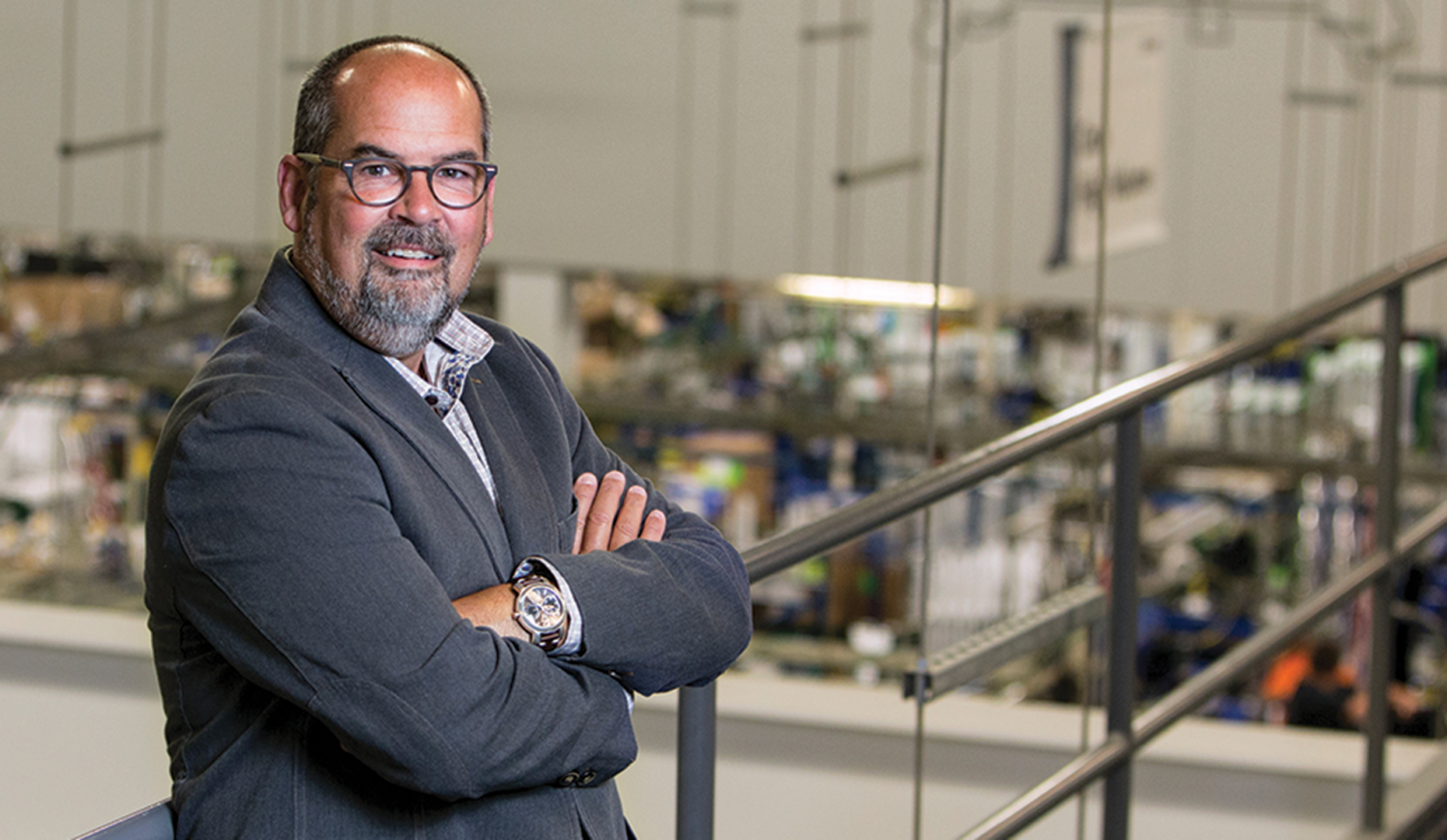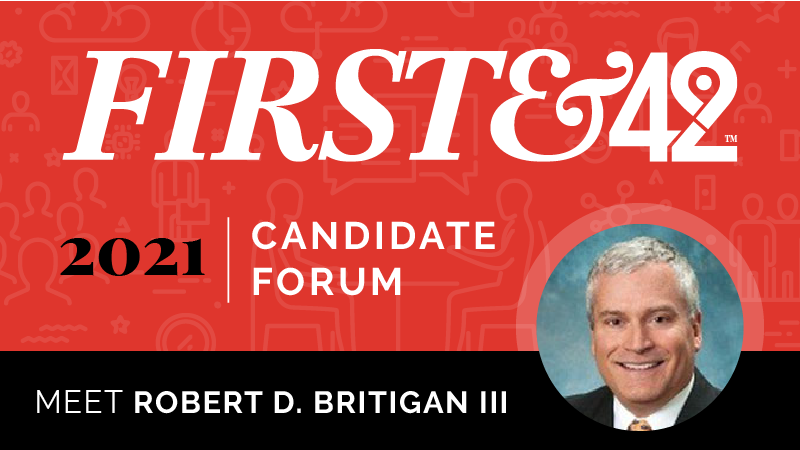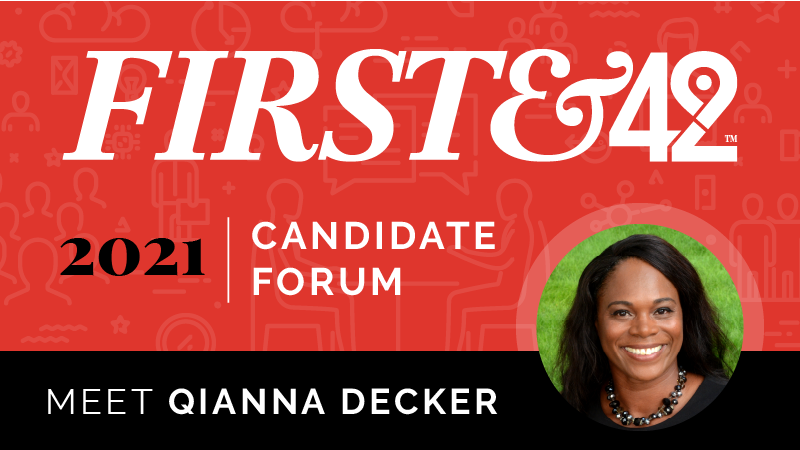We sat down with Bill Fluharty, Director of Design at Stryker, to hear about his background and thoughts on the design industry.
What does a director of design do?
At a high level, my job is to build and maintain the competencies of design within the Medical division of Stryker. By developing talents of our people and leveraging design methods and tools, I assure that the disciplines of design add value to our company. Design is key to getting the most out of our product development efforts, creating meaningful experiences for our customers and differentiating Stryker from our competition. It’s my job to make sure we leverage design for the fullest benefit to Stryker.
What does your typical day look like?
My day is a mix of strategic and tactical discussions with our R&D leadership team, project teams, and design professionals. Projects are mostly focused on defining our future products and services or making sure the products we are currently developing are going to meet the needs of our customers for the next few decades.
Why did you decide to become a designer?
I have always had an interest in art and design. Although early on as a kid (I enjoyed) art, I did not learn about design until high school. I have always loved to draw and create. When I went to college, I thought I was going into graphic design, mostly because my high school art teachers and counselors did not know about many applied arts degrees, and interior design and graphic design were all they could recommend. Once I started college and entered the art department, I saw many options—including industrial design. Designing products was much more exciting to me than graphics, so I made industrial design my major.
What sparked your interest in design?
In high school, I enjoyed the challenge that design provides. Art projects were fun and they allowed me to explore my creativity and try different techniques for creating, but I was drawn to the challenges of a design assignment. For example, when I was asked to create a graphic design for a specific purpose, I was more motivated to use my creativity than if I was working on an open expression art project. Early on, I realized that design offers challenges and includes parameters or hurdles that push you to think harder about solutions. It was always fun to use my creativity to create something for a purpose.
Everyone starts somewhere. What was your first job?
As a kid, I was always cutting lawns or shoveling snow for neighbors, but my first real job was when I was 14. I worked in an ice cream shop. It was a busy place and I had a lot of fun serving people. My first real creative job was at Greenfield Village in Dearborn, Michigan. I was fortunate enough to get a job in the production pottery due to some experience in high school pottery classes. I really enjoyed working in a job where I had to use my skill to create something of value. Our job in pottery was to make reproductions of pottery craft in the Ford Museum, and it was a great opportunity to learn that creating something of value requires a process, tools, and practice. How else could you make 150 candle holders on a potter’s wheel in one shift and have visitors tell you that they could not tell the difference between them? I loved that job. It was creative and technical at the same time and I felt as if I was learning and developing skills every day. The lessons provided at that job taught me foundational skills for what I do today. I am very thankful for that experience.
What is your favorite part about being a designer?
Being a part of a team that is charged with defining the future for our company. Many business professionals spend their time imaging and planning the future of their companies, but designers roll up their sleeves and create it. It never ceases to amaze me how a talented design team can visualize what others cannot see. Designers use their talents to tell stories about the future that allow others to engage their imaginations, which motivates focused, strategic discussion. I love seeing designers engage their talents to imagine a preferred future, one that illustrates how a company’s strategies, empathy for their customers, and the appropriate use of technology can lead to caregivers who are safer and provide better care for patients and positive growth for Stryker.
Where do you find inspiration for the designs that you create?
Inspiration for our product and service designs comes primarily from our customers. Our products are designed to make healthcare better. This means that we are always working to understand the needs of caregivers. If we can solve a problem for our customers and make them more successful, we are ultimately successful. Beyond our customers, our design team starts every project with a discovery effort where they research trends in product design, business solutions, and the application of technology. This phase of a project is highly motivating to me as it helps to imagine the outside boundaries of what could be created for our customers and pushes us to think beyond the status quo.
What skills are important for a successful career in design?
First, a designer needs to be curious and have the skill to be an observer. It is only when one is driven to learn about the context that creates problems, and the many possible ways to solve problems, that one is using his or her curiosity well. Second, empathy is critical to being successful as a designer. A designer advocates for the end user of a product and it is through empathy that a designer truly understands what is meaningful to the people we design for. Finally, a designer needs to be a storyteller. Visions of the future are complicated and, at times, scary. Designers use their creative talent and skills with visual design methods to represent the stories development teams need to tell to motivate progress and to prepare strategic activities that move an organization forward.
What is your favorite creation/project that you have worked on?
What I am doing currently is the most challenging work I have done to date. In building the competencies of design within Stryker Medical, I am helping to ensure that the business growth of our division is sustainable. The best part of this is that we are developing new technologies that help caregivers help their patients. The design work we are doing is changing the way we develop products, and the result will be better outcomes for our customers and their patients.
What is the biggest lesson that you have learned since you began your career?
Design is truly a team sport. The designer has unique talents, but they are worthless unless blended with the talents of other product development and business disciplines. When a designer is engaged with an interdisciplinary team, he or she can use their skills to amplify the power of the team by improving communication, collaboration, creativity, and critical thinking.
How do you balance creativity with business?
Balancing creativity with business is simple for me. The things we create are intended to drive our business forward; therefore, everything we do has to make sense to the business. We create to be of service to our customers, and if we do this well, they reward us by buying our products and keeping us in business. We can imagine many ways to solve our customers’ issues, but finding the way that matches our company’s competencies, our access to resources and technologies, our product portfolio strategies, and the mission of our company is a creative challenge. Therefore, our business needs creativity every day. At Stryker Medical, we have adopted Design Thinking as our framework for introducing creative methods in product and business development. Design Thinking methods assure that our business units continue to be analytical in their approach to development while as the same time remaining open to new and creative ways of thinking about how their businesses will evolve. We are working to build the creative competencies of our company, hopefully improving our ability to create meaningful and impactful value.
Who do you view as a master of your craft?
I have a lot of respect for design leaders who not only create great product, but also create powerful and impactful organizations. I think the latter is more difficult because you have to impact talent, business processes, and culture to make design truly impactful. Design’s true value is not in the creation of an artifact (a product or service); rather, it is in improving the way we create new things. Don’t get me wrong—I love a great new consumer electronic product just like everyone else—but for me, if a design leader can change the way an organization observes and understands market needs, synthesizes contextual information into focused direction, imagines new and novel ways to solve problems, and the organization can repeat this process with consistent results, the design leader has done her or his job.
Who would you most like to work with?
Hyper-creative, talented professionals in design, marketing, engineering, and business development. I want to see young talent develop. My thrill regarding working with others is when a development team clicks through collaboration. This is a tough thing to accomplish, but when it happens, it’s magical.
What would be your dream project?
Years ago, I was a part of a social innovation experiment of sorts called the Keller Futures Center. The model was a partnership between private and public enterprises and educators. It was an attempt to see how design thinking methods can be used to help community members solve the problems government and social service agencies can’t seem to solve. We did five projects where people from the Grand Rapids community worked for 7 weeks to understand the issues and imagine solutions. After this experience, I was convinced that through a facilitated design process, we can improve our communities from within the community. Today, I am involved with creating meaningful solutions for caregiving professionals and, in the future, I hope to help communities create meaningful solutions that impact their quality of life.
How do you keep your creativity sharp?
I practice my creativity in two significant ways. First, I am a potter and enjoy creating original pieces of ceramic art. I challenge myself with projects that push my abilities. The process of creating ceramic art is a long one where, when things go well, the outcome can be very satisfying, but if you don’t plan and manage the process well, the outcome can be a disaster and major waste of your time. Also, from a work perspective, through the discovery research of my team, I learn so much about design trends. The purpose and context of every project demands new exploration to prepare the designer. I learn with them as we discuss the results of their research. One recent example of this is that we are working to establish our future Visual Brand Language. During the discovery research of this project, we identified 65 key design trends that influence fashion, architecture, and product design. The work became a catalyst for discussions regarding the way aesthetics represent our company’s brand. I was aware of some of these trends, but after this work, I felt as if I spent a couple of semesters in design school again.
If you could be creative in another “space,” what would that be?
The social innovation space is compelling to me. I think that business can step up and contribute more socially through facilitated community design projects. Social innovation is interesting to me because projects can create meaningful and manageable solutions to local issues, but maybe more importantly, we can teach citizens skills critical for the 21st Century. Imagine if all we did was help communities to collaborate better, or communicate more effectively. Teaching these competencies would go a long way to improve our communities.
What advice would you give to an aspiring designer?
Stay curious and use your curiosity to constantly learn about the issues of this world, the way people are solving problems, and the tools they are using. The best designers I know never stop learning and they never feel like they have their profession figured out. Design disciplines are constantly evolving, as is business and technology, so if you don’t work hard to stay relevant, then your ability to create value for your organization wanes.




